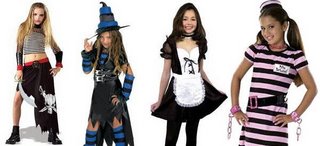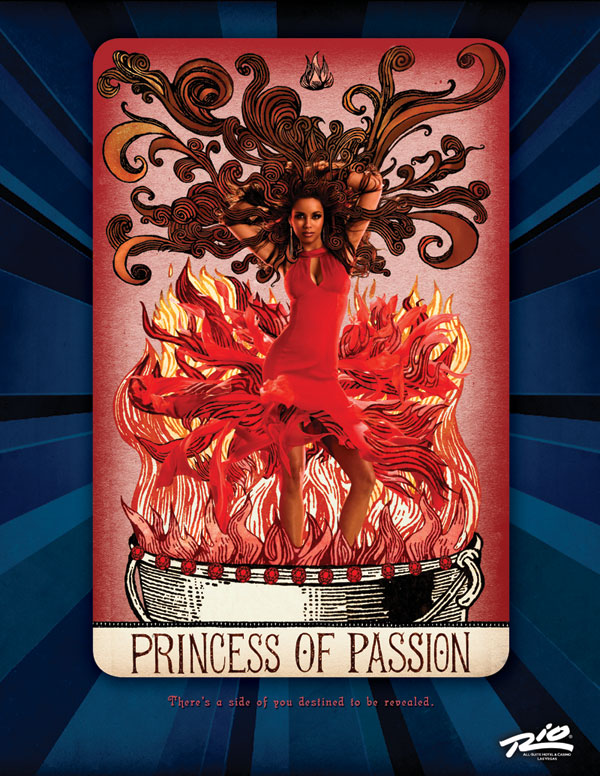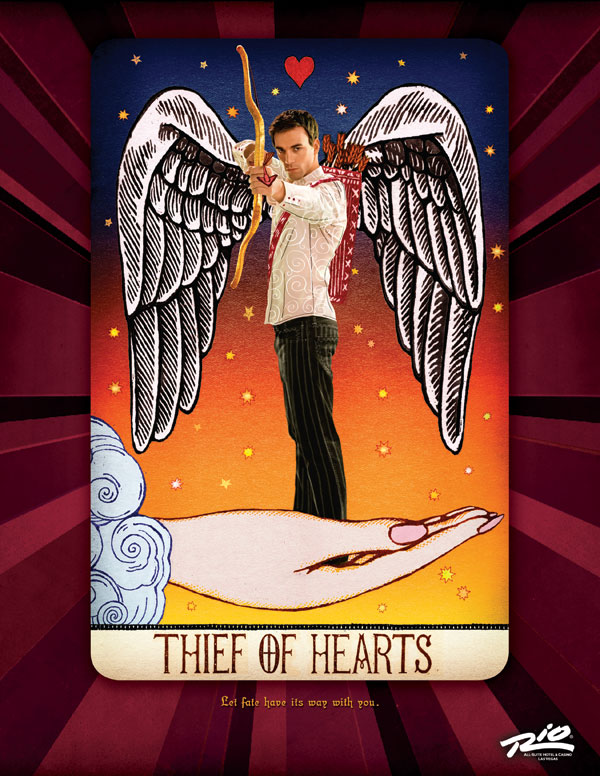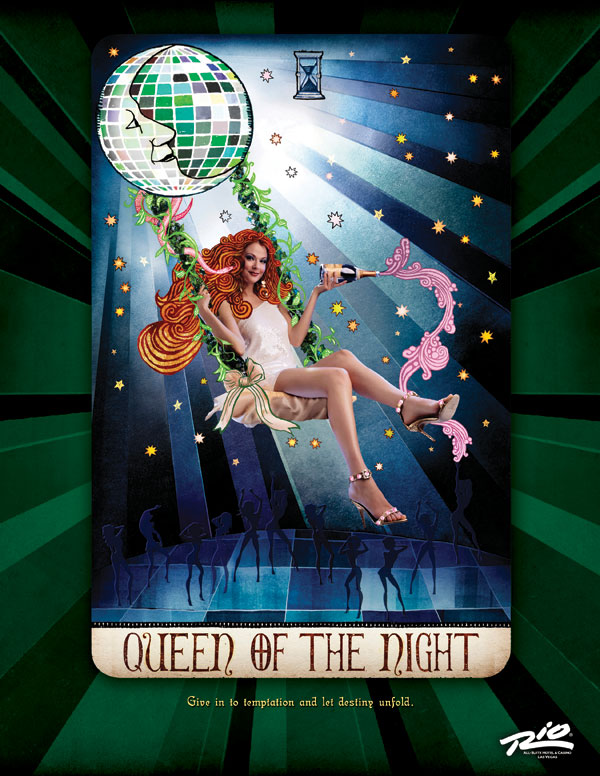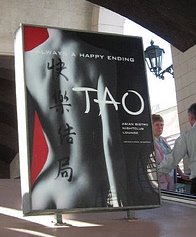
This is an ad for Tao Asian bistro and nightclub in Las Vegas. The tagline is “Always a happy ending.” Note the naked woman’s body with the presumably Chinese characters on her. And of course a “happy ending” is often associated with Asian massage parlors…
intersectionality
Funky Frum: Aimed at conservative Jews
Marabo: For Muslim women
Modest by Design: Formal wear; tagline is “Clothing your father would approve of.”
Shade: Aimed at Mormons
These could be useful in all kinds of ways–for instance, is it necessarily oppressive to dress “modestly”? Is there a difference in the tone of these websites (i.e., providing choice vs. “clothing your father would approve of”)? Do we view the website aimed at Muslim women differently than the others?
This campaign ad from 1988 is part of the larger politicization of the black underclass. “Willie Horton” and the “welfare queen” both emerged as symbols during this period with which to demonize poor blacks for political clout. Ultimately, using the name Willie Horton became a powerful tool to criticize politicians for being weak on crime and not protecting the innocent white population from the guilty black population.
[youtube]https://www.youtube.com/watch?v=Io9KMSSEZ0Y[/youtube]
Ultimately, increasing toughness of the criminal justice system led to a situation, today, where about 1/2 of all black men are in the prison system. See an interesting entry on Willie Horton on wikipedia here.

This website created by the American Anthropological Association is a great way to explore the social construction of race. There’s an awesome timeline that traces political and scientific trends where you can click on any part of it and get more information. It’s a great resource.It also includes this great 7 minute video called “A Girl Like Me”:
I’d actually love to get some feedback on this video. I really like it, but last time I showed it (in a social psychology portion of a Race and Ethnicity course), the class had a hard time recovering. It was depressing and I wasn’t very successful in DOING something SOCIOLOGICAL with it. Any ideas?
Lisa Wade, PhD is an Associate Professor at Tulane University. She is the author of American Hookup, a book about college sexual culture; a textbook about gender; and a forthcoming introductory text: Terrible Magnificent Sociology. You can follow her on Twitter and Instagram.
I LOVE this image. It’s a fashion spread.
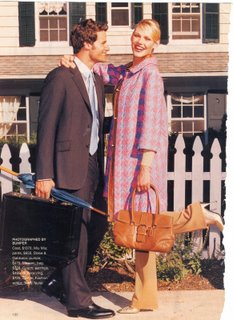
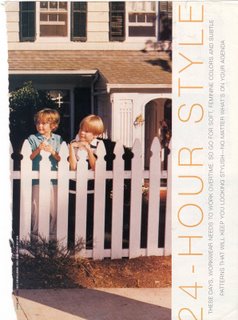
Question:
Who’s taking care of those little tow-headed boys behind the white picket fence when both mommy and daddy go to work?
I use this picture to talk about the way in which middle- and upper-class women are “getting equal” with men by transferring their caretaking responsibilities to less privileged women… who are, as in this ad, invisible.
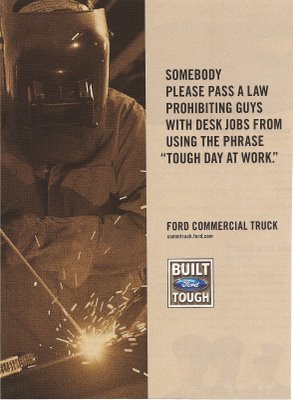
Clearly this ad is making a connection between being “tough” and doing blue-collar work. The implication is that desk jobs are not “tough.”
Here’s what’s really fascinating about this: I found the ad in a magazine called Entrepreneur, a magazine clearly aimed at an upper-middle or upper class audience who do desk jobs. Since I find it unlikely they’re trying to actually alienate the readers of the ad, I’m guessing the point is to let these desk workers gain some “toughness” by buying a Ford truck.
Newsweek had an article today wondering if girl’s Halloween costumes might be too risque. I wasn’t surprised (I remember being shocked when I saw young girls dressed up as Spice Girls in 1998) so I decided to look around the Internet to find other questionable costumes. Not surprisingly, Halloween costumes are markers of not only gender and heterosexuality, but of race and class as well.
Let’s take children’s “occupational” costumes, for example. Here are some for girls: The French maid, nurse, and cheerleader costumes were the most prevalent.
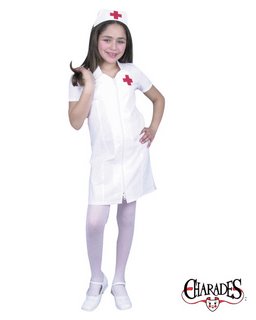
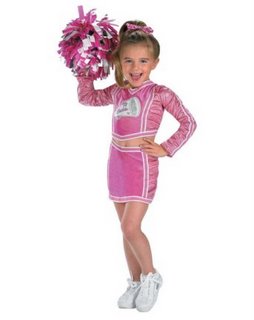
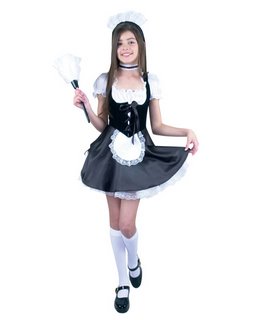
And what about occupations for boys?
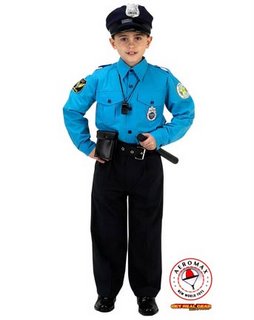
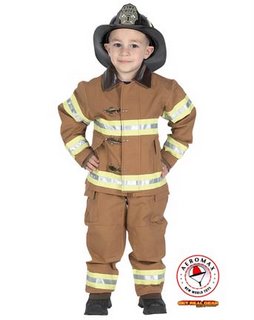

And look at how race is marked with some of the children’s costume models (2 cats, and a dancer):
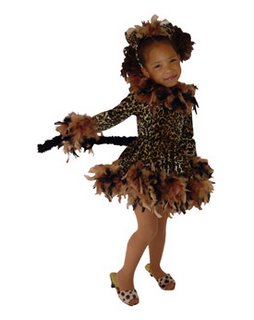
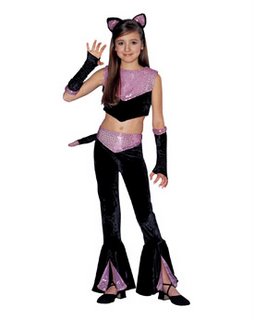
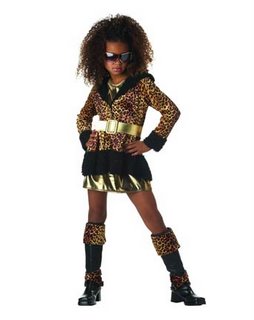
And note how the intersections of race, militarization, sexuality and gender are also displayed in this costume. The first is a children’s costume, and the second is for teenagers. Both costumes are called “Major Flirt.”
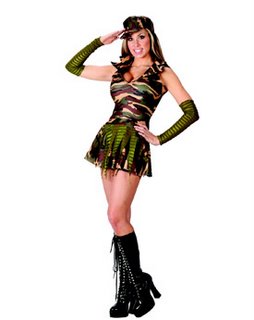
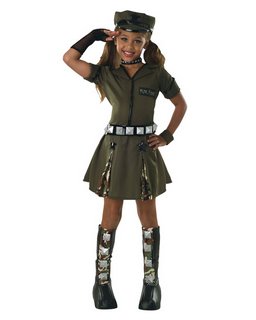
And now let’s move on to teenage costumes. Here are some particularly popular ones for teen girls– sexy devils and sexy angels.
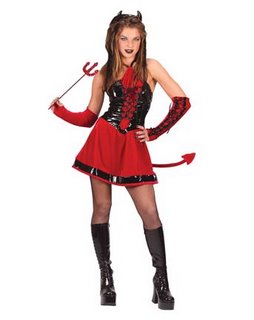
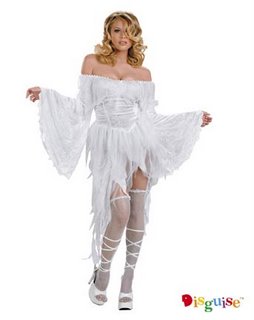
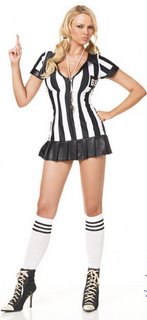
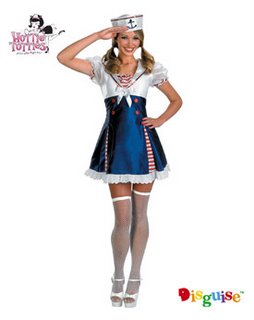
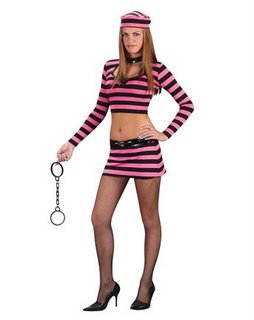
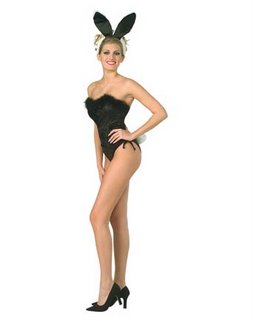
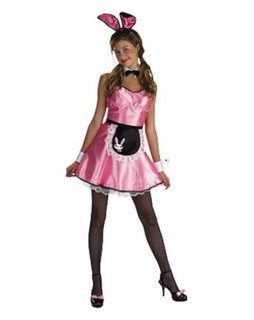
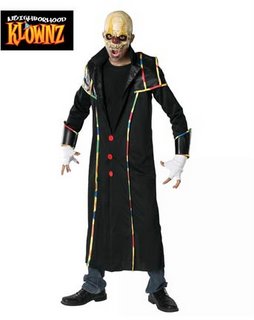
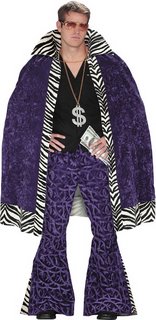
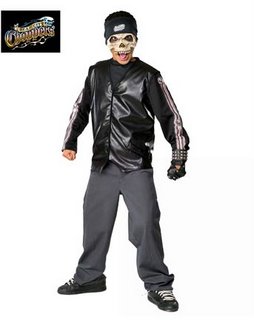
The costumes for couples are also pretty telling– marked by heteronormative stereotypes. The first is a “Pimp and Kristy” costume, the second is a cop costume, and finally a costume of a brick layer and a woman dressed as a home, where the woman is literally displayed as the object, as the object of a man’s action.
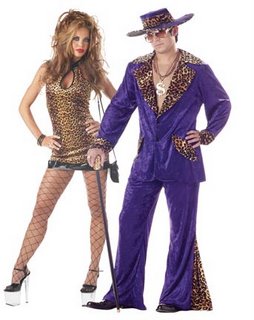
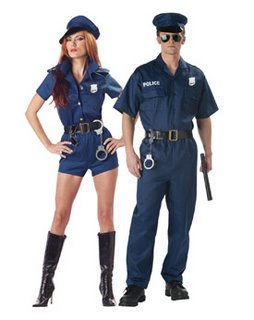
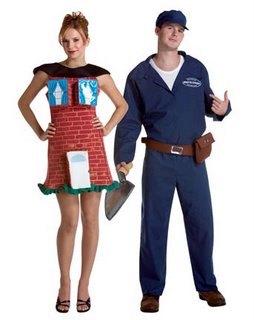
Anyway, happy Halloween!
Women of color are stereotyped as more sexual than white women.
This billboard draws on the stereotype that Latinas are always hot and spicy:
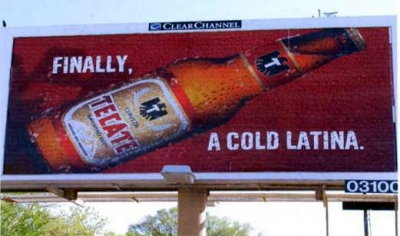
NEW: These three ads, sent in by Elizabeth A., are for Rio Suites Hotel and Casino in Las Vegas (images found here). The “card” representing passion just-so-happens to include a woman of color in a red dress with fire.
Funky Frum: Aimed at conservative Jews
Marabo: For Muslim women
Modest by Design: Formal wear; tagline is “Clothing your father would approve of.”
Shade: Aimed at Mormons
These could be useful in all kinds of ways–for instance, is it necessarily oppressive to dress “modestly”? Is there a difference in the tone of these websites (i.e., providing choice vs. “clothing your father would approve of”)? Do we view the website aimed at Muslim women differently than the others?
This campaign ad from 1988 is part of the larger politicization of the black underclass. “Willie Horton” and the “welfare queen” both emerged as symbols during this period with which to demonize poor blacks for political clout. Ultimately, using the name Willie Horton became a powerful tool to criticize politicians for being weak on crime and not protecting the innocent white population from the guilty black population.
[youtube]https://www.youtube.com/watch?v=Io9KMSSEZ0Y[/youtube]
Ultimately, increasing toughness of the criminal justice system led to a situation, today, where about 1/2 of all black men are in the prison system. See an interesting entry on Willie Horton on wikipedia here.

This website created by the American Anthropological Association is a great way to explore the social construction of race. There’s an awesome timeline that traces political and scientific trends where you can click on any part of it and get more information. It’s a great resource.It also includes this great 7 minute video called “A Girl Like Me”:
I’d actually love to get some feedback on this video. I really like it, but last time I showed it (in a social psychology portion of a Race and Ethnicity course), the class had a hard time recovering. It was depressing and I wasn’t very successful in DOING something SOCIOLOGICAL with it. Any ideas?
Lisa Wade, PhD is an Associate Professor at Tulane University. She is the author of American Hookup, a book about college sexual culture; a textbook about gender; and a forthcoming introductory text: Terrible Magnificent Sociology. You can follow her on Twitter and Instagram.
I LOVE this image. It’s a fashion spread.


Question:
Who’s taking care of those little tow-headed boys behind the white picket fence when both mommy and daddy go to work?
I use this picture to talk about the way in which middle- and upper-class women are “getting equal” with men by transferring their caretaking responsibilities to less privileged women… who are, as in this ad, invisible.

Clearly this ad is making a connection between being “tough” and doing blue-collar work. The implication is that desk jobs are not “tough.”
Here’s what’s really fascinating about this: I found the ad in a magazine called Entrepreneur, a magazine clearly aimed at an upper-middle or upper class audience who do desk jobs. Since I find it unlikely they’re trying to actually alienate the readers of the ad, I’m guessing the point is to let these desk workers gain some “toughness” by buying a Ford truck.
Newsweek had an article today wondering if girl’s Halloween costumes might be too risque. I wasn’t surprised (I remember being shocked when I saw young girls dressed up as Spice Girls in 1998) so I decided to look around the Internet to find other questionable costumes. Not surprisingly, Halloween costumes are markers of not only gender and heterosexuality, but of race and class as well.






And look at how race is marked with some of the children’s costume models (2 cats, and a dancer):


















Anyway, happy Halloween!
Women of color are stereotyped as more sexual than white women.
This billboard draws on the stereotype that Latinas are always hot and spicy:

NEW: These three ads, sent in by Elizabeth A., are for Rio Suites Hotel and Casino in Las Vegas (images found here). The “card” representing passion just-so-happens to include a woman of color in a red dress with fire.

